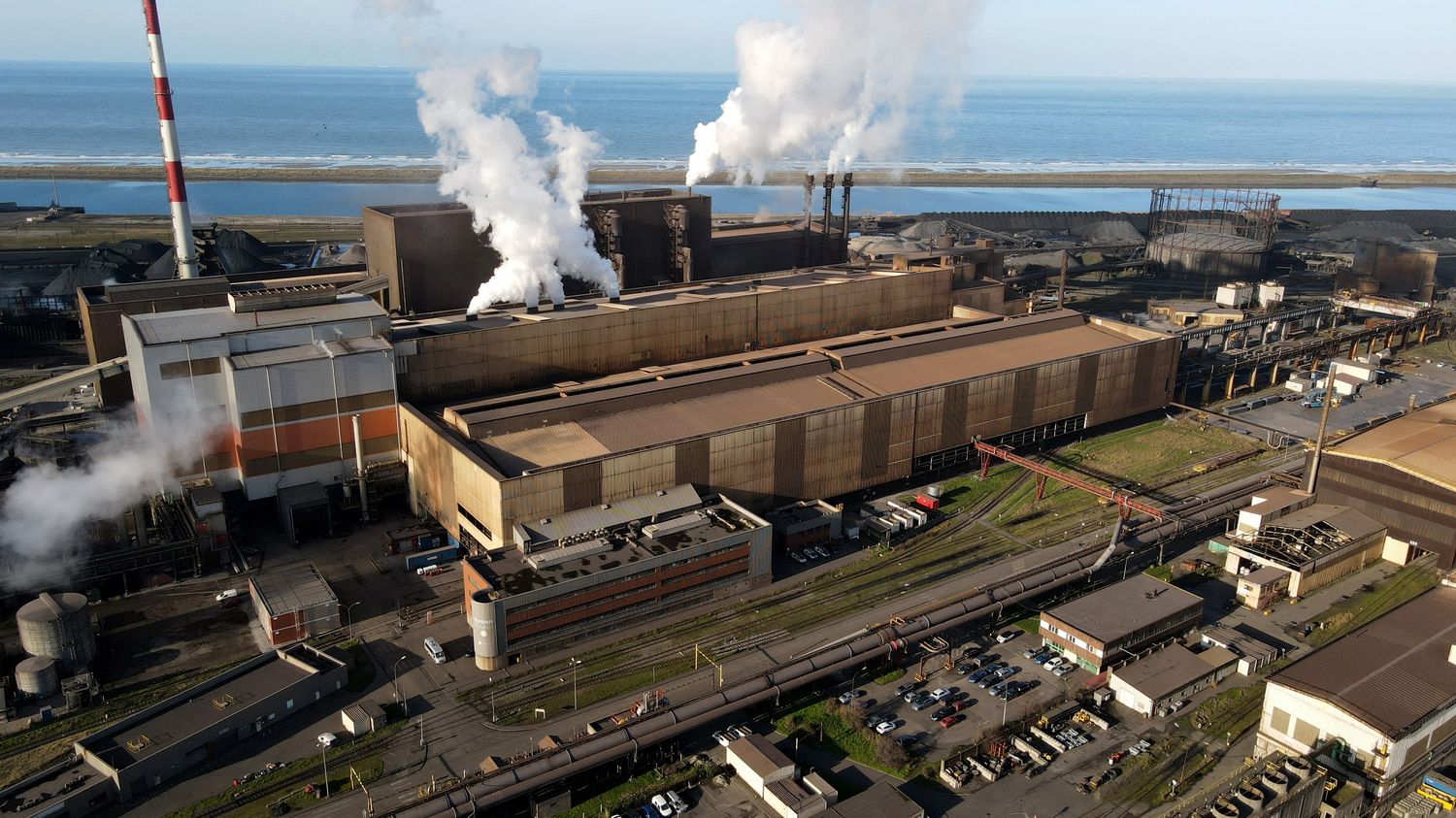In order to reduce greenhouse gas emissions, the government wants to capture the CO2 emitted by the most polluting factories, transport it and then store it in the ground, several hundred meters deep.
Published
Reading time: 5 min

Storing CO2 in oil fields in France. This is the idea supported by the Minister of Industry and Energy, Roland Lescure, who launched a plan on Friday April 26 to experiment “four to five CO2 storage projects” in France from 2025. This announcement aims to help the largest French industries, which are very polluting, to meet their decarbonization objectives, while the country wants to halve the CO2 emissions of its industry by 2030. Franceinfo makes update on this announcement.
1What does this capture method consist of?
France, which has old or still active hydrocarbon reserves (oil and gas), intends to use these deposits – mainly located in New Aquitaine and the Paris region – to decarbonize its industry. These wells will be used to store CO2 emitted by industries. Roland Lescure launched a “call for expressions of interest”particularly aimed at players in the hydrocarbon sector.
Concretely, the government wants to capture the CO2 emitted by the most polluting factories (ffertilizer manufacturers, cement manufacturers, chemists, etc.), transport it then store it in the ground, several hundred meters deep. This CO2 capture and storage technology – there are other techniques, including capturing CO2 in the air – aims to trap the greenhouse gas produced by the combustion of fossil resources before it escapes into the atmosphere. And thus fight against global warming caused by human activities.
“The process consists of capturing the CO2 which escapes in the form of smoke at the exit of the factory, compressing it from a gaseous state to a quasi-liquid state and transporting it in pipelines in order to store it beyond 800 meters depth”summarizes for franceinfo Pascale Bénézeth, CNRS research director at the Environmental Geosciences laboratory in Toulouse.
By 2022, there were nearly 200 carbon capture and storage projects worldwide, of which 30 were in operation, according to a report from the Global CCS Institutea circle of reflection who promotes these technologies. They can be found in particular in the North Sea or in the United States.
2Why is the government banking on this technology?
The executive says it is turning to storage in order to meet its decarbonization objectives: by 2030, France wants to halve its industry’s CO2 emissions. It has notably targeted the 50 most polluting industrial sites in France, such as that of Arcelor Mittal in Dunkirk (North), and intends to use this technology for some to reduce their carbon footprint. These industries have estimated their capture needs at around 8 million tonnes of CO2 in 2030 then at 16 million in 2040.
“If we want to halve industrial emissions in ten years, we must resort to carbon capture since there are industrial processes for which there is no alternative without emitting carbon. We must therefore capture and store”, affirmed Roland Lescure. In its “Carbon Capture, Storage and Utilization” (CCUS) strategy, published in 2023, the government hoped to capture 4 to 8 million tonnes of CO2 using this technology by 2030, and 15 to 20 million over time. 2050. For comparison, greenhouse gas emissions in France were 385 million tonnes of CO2 equivalent in 2023, according to the Ministry of Ecological Transition. For the High Council for the Climate (HCC), the government’s CCUS strategy seems “ambitious” for 2030 but “consistent” for 2050.
While France already stores CO2 in offshore projects in Norway and Denmark, the government project also aims to “divide the cumulative cost of transport and storage by two or three” in relation to these Nordic projects, to which France will remain associated, according to Bercy. The tests carried out by the government will initially consist of verifying that the oil fields or cavities are properly sealed to store CO2 for millions of years. But if this storage technique can present risks of leaks, they are “controlled, with monitoring from injection to storage”recalls Pascale Bénézeth.
3Is this a viable solution to fight global warming?
Carbon capture and storage are among the solutions envisaged to contain the rise in global temperatures. The Intergovernmental Panel on Climate Change (IPCC) integrates this technology in its scenarios to achieve carbon neutrality, but recalls that this must be done in addition to an essential solution: the drastic reduction of our greenhouse gas emissions.
In its latest roadmap for carbon neutrality in 2050, published in September 2023, the International Energy Agency (IEA) she believed that these technologies were “expensive” And “had not yet been proven on a large scale”. Some actors, notably NGOs, also warn that capture should not be a pretext for continuing to pollute.
“This technology is an option, a possibility, but it must inevitably be associated with a reduction in CO2 emissions on a global scale. This does not mean that, since we can capture and store CO2, we must continue to transmit.”
Pascale Bénézeth, research director at CNRSat franceinfo
In an opinion published in 2020, Ademe mentioned the “limited potential” of these techniques for “reduce industrial emissions” In France. Above all, it emphasized that they were only applicable to a few industrial sites located around Dunkirk (North), Le Havre (Seine-Maritime) and Lacq (Pyrénées-Atlantiques), due to the infrastructure necessary for this process.
Since the 19th century, the Earth’s average temperature has warmed by 1.1°C. Scientists have established with certainty that this increase is due to human activities, which consume fossil fuels (coal, oil and gas). This warming, unprecedented in its speed, threatens the future of our societies and biodiversity. But solutions – renewable energies, sobriety, reduced meat consumption – exist. Discover our answers to your questions about the climate crisis.
